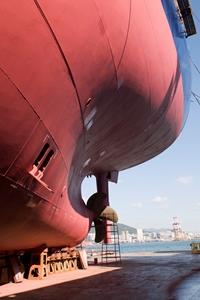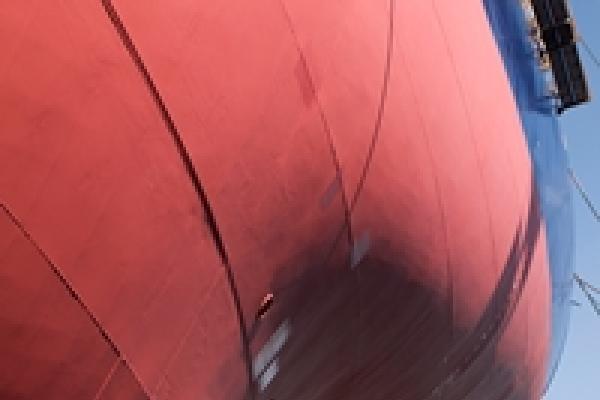
Steamship Mutual
Published: June 01, 2015

The arbitrations decisions cited in this article were originally published on i-law.com and have been referenced with permission of Informa UK Limited. If you do not subscribe to this service, you may obtain temporary unlimited access to the above decisions and full i-law service by clicking here.
Performance issues are a consistent presence in the relationship between an Owner and Charterer. Performance (speed/consumption) claims remain a common complaint from Charterers and a common source of deductions from hire. The frequency of such claims over the last five-six years (since the crash in hire rates in early 2009) is more often than not attributed to the increase in bunker prices as well as technological advances in monitoring vessels adopted by Charterers. That said with hire rates not increasing dramatically and the current drop in bunker prices a drop in performance claims might have been anticipated. However, this does not seem to the case, with performance remaining a real issue on both a small and large scale. Perhaps what has changed is the cause of such claims with e.g. hull fouling being a commonly cited cause for both reduced speed and over consumption.
Unfortunately, performance claims do not often appear in English case reports with the majority of these claims being settled at an early stage or resolved in arbitration. Arbitrations are sometimes reported but they will be a short summary of the award and are unlikely to give an insight into the reasoning of the tribunal. However, they do provide some assistance in ascertaining the direction that arbitral tribunals are taking with performance disputes.
2014 saw three reported decisions in London arbitration: LMLN 1/14 (27 Jan 14); LMLN 12/14 (29 May 14); and LMLN 18/14 (16 October 14). The first two decisions clarify already established principles regarding the operation of a performance warranty: the timing of the warranty and the criteria required to satisfy the warranty as to good weather. The latest decision - LMLN 18/14 - instead looks at the effect that hull fouling has on performance and emphasises the importance of ensuring the accuracy of a vessel's performance figures whenever an owner and /or disponent owner enters into a new charter. This is perhaps the most significant of the three decisions with repercussions also as to how one looks at off-hire claims relating to performance.
Looking at each decision briefly:
LMLN 1/14 (27 Jan 14)
A new building had recently entered into service and was chartered for one short time charter trip on an amended NYPE (1946) form. Lines nine-ten were unamended with details as to the vessel's performance being set out in the riders at clause 29. Clause 29 contained Owners' performance warrant. Charterers alleged a breach of this warranty following over consumption in-port at four different ports during the charter.
There was no argument as to the existence of the warranty only as to whether it was a continuing warranty and at what point would Owners be considered in breach. Owners argued that in accordance with established principles (set out in The Apollonius [1978] 1 LLR 53 ) the warranty in clause 29 applied - in the absence of an express stipulation that the warranty is to apply throughout the duration of the charter - no later than the time of delivery of the vessel under the charter. The Charterers, however, said that the ongoing maintenance provisions in clause 1 (as amended) applying to "the service and at all times during the currency of this Charter" implied a continuing warranty as to performance.
The tribunal agreed with the Owners that an express provision was required to impose a continuing warranty as to performance and that, in the absence of such, the warranty applied only at the time of delivery into the charter service. However, Owners were nevertheless found to be in breach of the warranty in that "in a relatively short time charter trip", the vessel's performance of the service for the duration of the charter (during which she had over consumed) "might be considered good evidence of its capability at the time of delivery".
The charter lasted approximately 14 days. There is, however, no indication from the tribunal at which point a "time charter trip" stops being "short" nor indeed whether it makes a difference at what point the measurement of performance occurs. Each case will turn on its own facts but there will still be some debate as to whether there is a breach - at the time of delivery - if the measurement of performance (e.g. by reference to "good weather days") can occur only in the last couple of days of, say, a 3 week voyage. It is not clear whether such evidence at this point of the charter will be sufficient to establish a breach as "at delivery".
LMLN 12/14 (29 May 14)
This decision looks at the nature of the performance warranty itself and the preferences that a tribunal will show as to how a breach and subsequent loss is assessed.
This time charter was on an amended NYPE (1993) form. The standard performance warranty found in lines 19/20 was deleted. However, there were express performance provisions contained in the riders to the charter at clauses 63 (description), 100 (Speed consumption) and 113 (Ocean Routes clause). Notably the vessel's description and the warranty provisions made no specific reference to the warranty applying in "good weather conditions" other than to the deleted line 20. The Charterers argued therefore that the performance warranty was absolute and was to apply in "all weather conditions".
Owners argued that the repeated references to and definition of "good weather conditions" in clauses 100 and 113 were enough to indicate that performance was subject to such conditions. Further, that no commercial Owner would agree to the warranty applying in all weather conditions.
The tribunal preferred Owners' submissions stipulating that, the repeated reference/definition of "good weather conditions" was a "strong indication that, in accordance with general practice", the vessel's performance was only to be measured in such conditions; and that if it was intended that the warranty was to apply in all weather conditions then "stronger wording would be needed in the charterparty". One could argue therefore that the default position is simply that performance will be measured in good weather. However, in the absence of a good weather definition it is not clear whether a tribunal will imply the standard criteria (ie BF 4 & DSS 3 etc) or impose an absolute warranty without any "stronger" or additional wording. This is an unlikely scenario but it does leave open to debate as to what wording (and in what circumstances) will be enough to impose an absolute warranty on an owner.
LMLN 18/14 (16 October 14)
This final decision highlights the importance of reviewing performance warranties especially where external factors affect the vessel's performance during her service; in this matter specifically hull fouling - a common influence on performance.
Owners' vessel was chartered to the same Charterers for two time charter trips. The vessel was fixed under two separate charters (on identical terms based on an amended NYPE (1946) form), the second being in direct continuation of the first.
The vessel was delivered in Shanghai under the first charter proceeding thereafter in ballast to Morowali, Indonesia, to loada cargo of nickel ore. Loading took some 48 days during which time the vessel's hull, propeller and rudder became fouled. Consequently the voyage to the discharge port in China showed not only reduced speed but also overconsumption.
Upon completion of discharge the vessel was redelivered under the first charter and delivered under the second charter. However, no underwater inspection could be carried out nor the hull cleaned prior to redelivery under the second charter. Predictably, the vessel also underperformed/ overconsumed on the voyage under the second charter. Charterers, accordingly, claimed damages in respect of a breach by Owners of their performance warranty under both charters.
The tribunal found that Charterers' claim under the first charter failed. The charter contained an express clause (clause 128(1)) providing that where a prolonged stay at a port for more than 28 days results in bottom fouling Owners would not be responsible for a subsequent reduction in the vessel's speed or increase in consumption. Further, the vessel performed as per warranty on the ballast leg after delivery in Shanghai.
The performance claim under the second charter was, however, different. Owners argued that as the second charter was taken in direct continuation of the first, the Charterers did not allow the hull to be cleaned following the long stay at Morowali and as such were "estopped from claiming under performance under the second voyage". The tribunal rejected this argument simply on the basis that Owners were aware of the likelihood of hull fouling when they delivered the vessel under the second charter (having protested to Charterers prior to delivery), yet Owners fixed the vessel with identical performance warranties to the first charter running the risk that the hull fouling may make them in breach of such warranties. Although the tribunal indicated that neither party had turned its mind to the effect that the hull fouling may have had on the performance of the vessel, it appears that the burden was on the Owners to take steps to revise its performance warranties in anticipation of such an issue arising.
As mentioned above, the restrictive nature of reports on arbitration means that it remains unclear what arguments may have been put to the tribunal in relation to the claims. Notably, the sums involved in both this case and LMLN 1/14 fall within the usual threshold for the LMAA Small Claims Procedure (SCP) and therefore, if it applied, the restrictions of the SCP (including the lack of a right to appeal)may mean that certain arguments may not have been investigated or argued in great detail. The decision in this case should be looked at with this mind.
The claims in this case are presented as ones for damages flowing from Owners' breach of their performance warranty. The question arises whether Charterers could, in the alternative or in principal, have argued that the vessel was off hire under clause 15 of the standard NYPE form, in that delivery of the vessel with her hull fouled was a "defect in hull" for the purposes of that clause. Staughton, J.’s judgment in The Ioanna [1985] 2 LLR 164 would suggest that as the vessel was delivered with her hull fouled the vessel would likely have been off hire for any time lost resulting from any reduction in speed and Owners liable for any additional bunkers consumed. Presentation of the claim as one for off hire would not here have made much difference to the ultimate liability for the vessel's performance but there may be other circumstances where an off hire claim may be larger than one in damages. An owner in the latter scenario may be able to set off any savings in bunkers from Charterers' damages claim for under-performance whereas for off hire claims under clause 15 any bunker savings can only be set off between the types of bunkers (ie IFO and MDO) and cannot be used to reduce the off hire claim.
In short, irrespective of how the claim is presented - in damages or as off hire - this decision is a timely reminder to Owners that when a vessel is delivered under a charter, even with the same Charterers, the obligation is on Owners to ensure that the vessel is in a condition to meet her performance warranties. Hull fouling is a common issue yet Owners often do little, when they have the opportunity to do so, to minimise their exposure to performance claims by revising the vessel's performance capabilities.
We are grateful to Carlo Sammarco of Arbis Sutherland LLP for this article.


